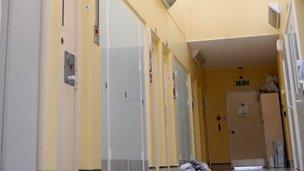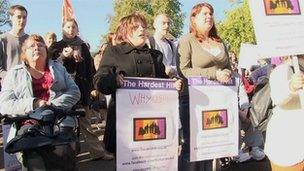
Public school closures are sweeping the nation, devastating cities like New York, Philadelphia, Chicago, and our home of Washington, D.C. Since 2008 DCPS has closed 29 schools, and Mayor Vince Gray and Chancellor Kaya Henderson recently announced plans to close up to 20 more schools by the end of the 2013 school year.
It’s a trend located in a larger shift toward privatization in education and elsewhere—a move that threatens democratic access to vital social resources.
It’s also a racist trend: overwhelmingly, families of color are affected. With just the most recent wave of closures in DC, of the 3,800 students who will be displaced by closures, only 36 are white. Of those students, 80% are low income.
In DC, activists are fighting the closures—in the courts, and on the streets. La Palabra, an internet radio project broadcast on WPFW’s Latino Media Collective, is interviewing people at the schools slated to be closed. They have interviewed grandparents, parents, and other caregivers affected by the closures and the response is unanimous: Mayor Gray, Chancellor Kaya Henderson, you CAN NOT have my school!
Since women are overwhelmingly the primary caregivers in families, women are the most burdened by these closures, after, of course, the students themselves. Some parents at Ferbee-Hope elementary school have already survived multiple school closings. Mothers and grandmothers are worried about the impact on their kids lives, the safety of the new neighborhoods they’ll be in. They see a city government that cares more about paving the way for development than about their kids.
Children with disabilities will be especially hard hit by the displacement and disruption the closures entail. Their entire learning community will be relocated without their input, and the staff on which they depend will be forced to reapply for their job. Tamara, a mother at Sharpe Health (a school for special needs kids), observes that the mayor and chancellor “don’t care about the emotional stability, the physical stability of our children.”
But mothers in DC care, and La Palabra is listening—parents are ready to act and block the closures! Support their voices with yours by signing Empower DC’s petition calling on an immediate moratorium on public school closures.
La Palabra, http://lapalabradc.tumblr.com/. Beck Levy, beck@astropressdc.com
(Photo Credit: http://lapalabradc.tumblr.com)



